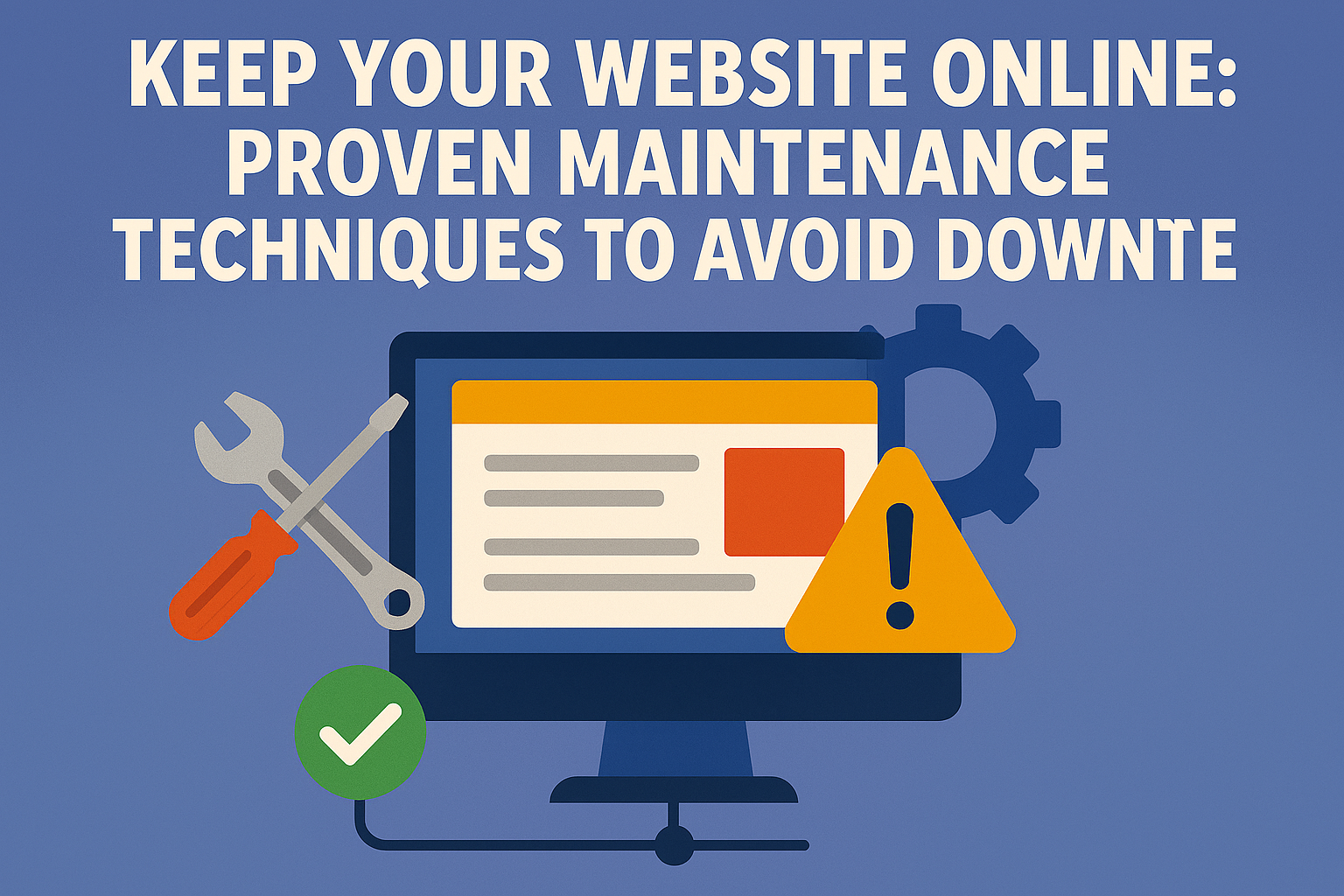Website downtime can be costly—leading to lost revenue, damaged reputation, and frustrated users. Whether you run a personal blog or a business site, keeping your website online is crucial. In this post, we’ll explore proven maintenance techniques to help you minimize downtime and ensure your site runs smoothly.
1. Regular Backups
Backups are your safety net in case of data loss or site crashes.
Explanation:
Schedule automatic backups of your website files and databases. Use reliable plugins or hosting services that offer daily or weekly backups. Store backups in multiple locations—such as cloud storage and local drives—to ensure redundancy.
2. Monitor Website Uptime
Constant monitoring helps you detect issues before they escalate.
Explanation:
Use uptime monitoring tools like UptimeRobot, Pingdom, or Jetpack to receive alerts when your site goes down. These tools provide valuable insights into performance trends and help you respond quickly to outages.
3. Update Software and Plugins
Outdated software is a common cause of security breaches and site failures.
Explanation:
Keep your CMS (like WordPress), themes, and plugins updated to the latest versions. Updates often include bug fixes, performance improvements, and security patches that help prevent downtime.
4. Optimize Website Performance
A slow website can lead to timeouts and poor user experience.
Explanation:
Compress images, enable caching, and use a Content Delivery Network (CDN) to speed up your site. Regularly test your site’s speed using tools like Google PageSpeed Insights or GTmetrix and implement recommended optimizations.
5. Secure Your Website
Security threats can take your site offline or compromise user data.
Explanation:
Install security plugins, use strong passwords, and enable two-factor authentication. Regularly scan your site for malware and vulnerabilities. Consider using a web application firewall (WAF) to block malicious traffic.
6. Choose Reliable Hosting
Your hosting provider plays a major role in your site’s uptime.
Explanation:
Select a hosting service known for reliability, speed, and support. Look for features like uptime guarantees, scalable resources, and 24/7 customer service. Consider managed hosting if you prefer a hands-off approach to maintenance.
7. Test After Changes
Every update or new feature should be tested before going live.
Explanation:
Use staging environments to test changes without affecting your live site. This helps you catch bugs and compatibility issues early, reducing the risk of downtime caused by faulty updates.
Conclusion
Website maintenance isn’t just about keeping things running—it’s about preventing problems before they happen. By implementing these techniques, you can significantly reduce the risk of downtime and ensure a seamless experience for your visitors. Stay proactive, stay secure, and keep your website online.


